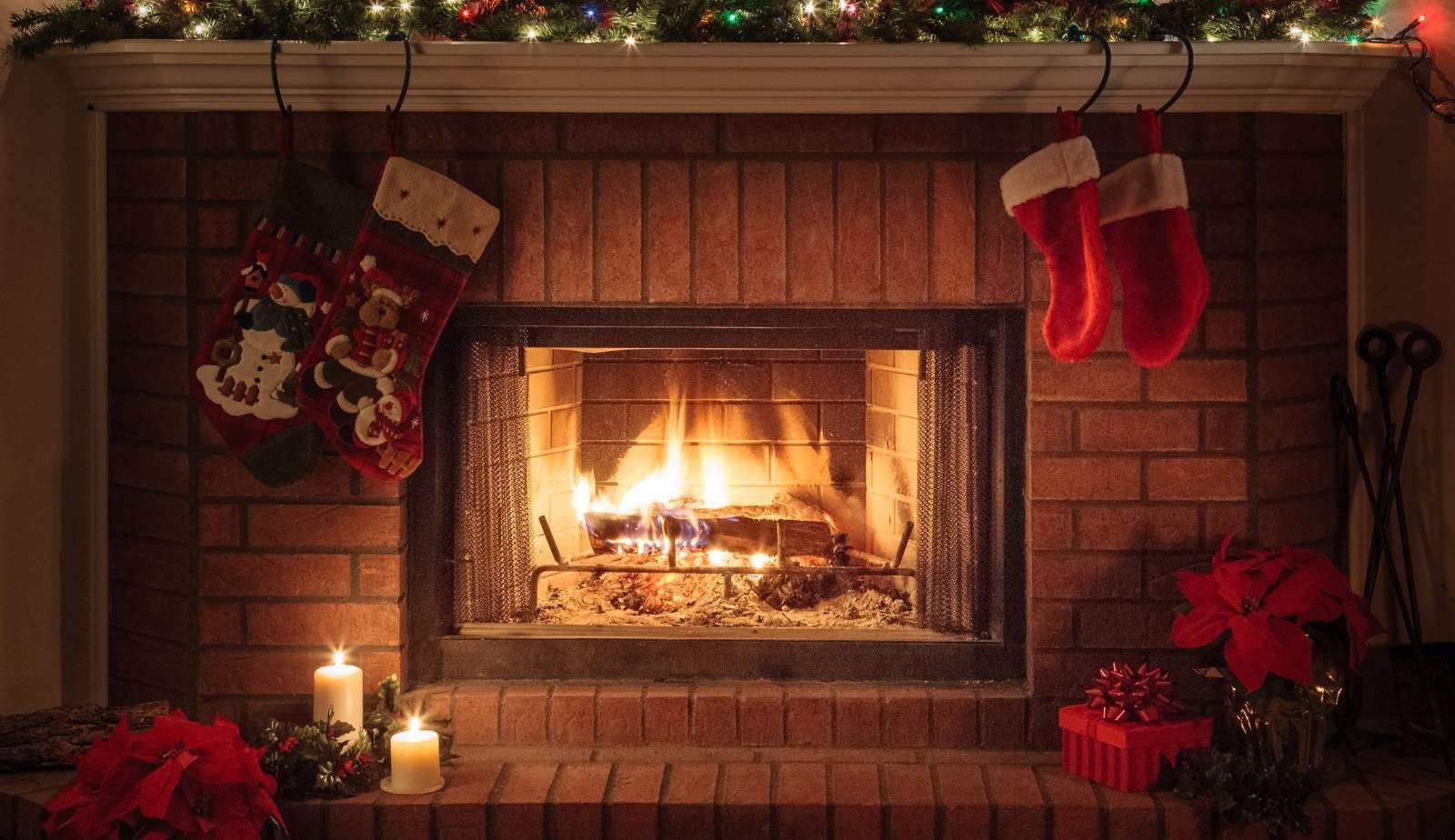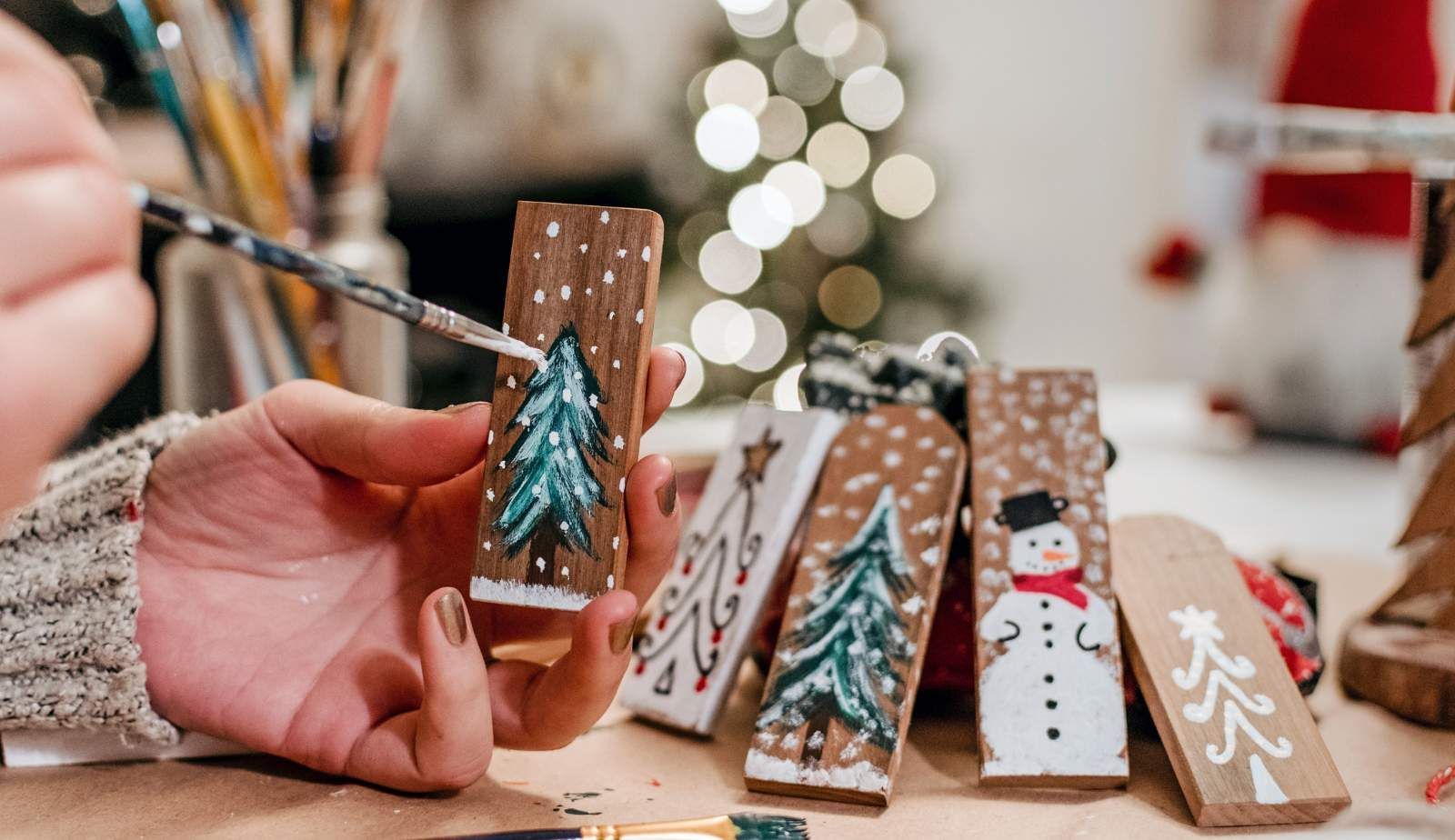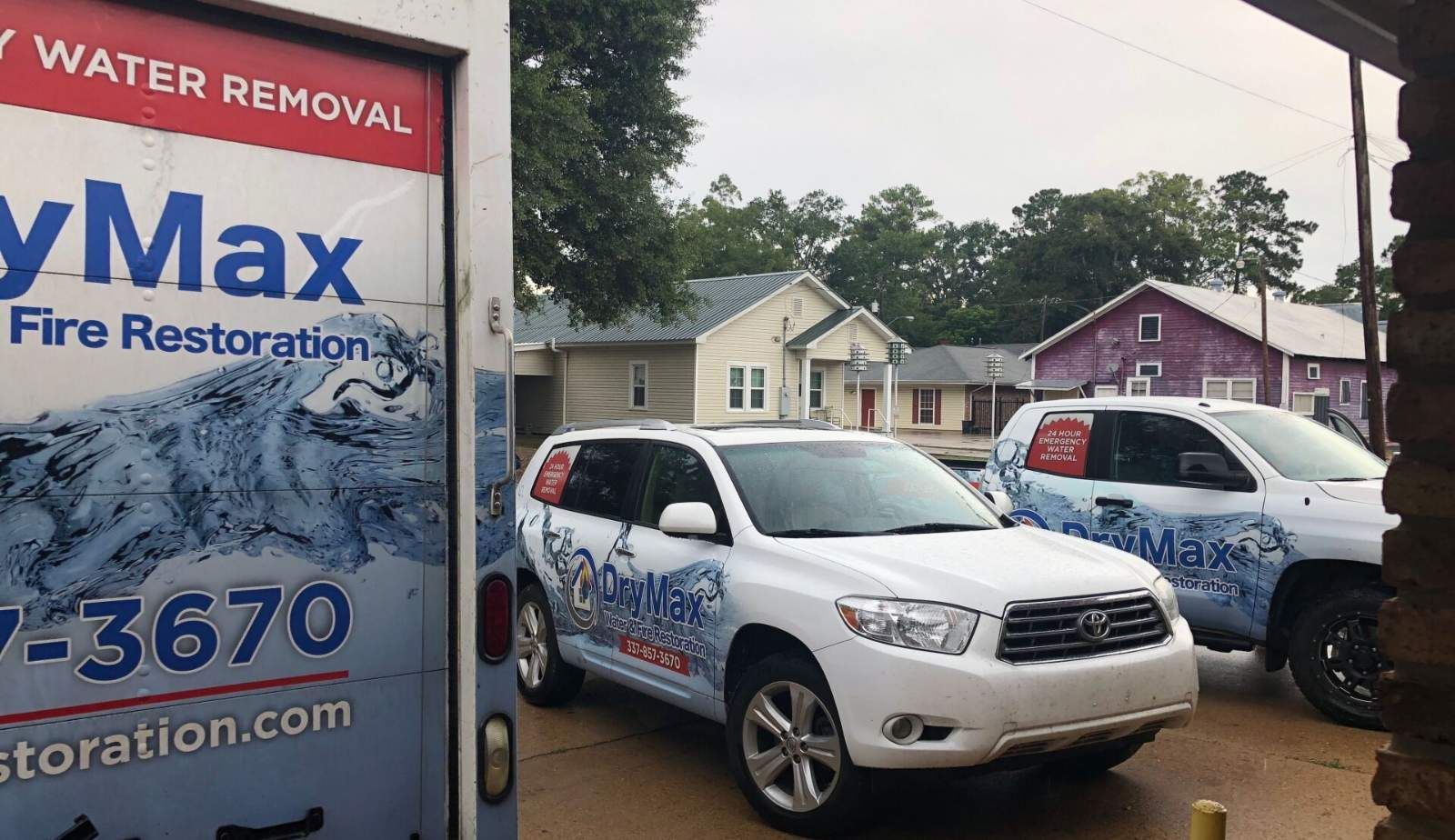Top Tips for Safe Holiday Decorating in Louisiana: Essential Guidelines to Prevent Fire Hazards
The holiday season brings joy and warmth to homes across Louisiana, but it also increases the risk of fire hazards. Homeowners often adorn their spaces with twinkling lights, festive decorations, and candles, potentially inviting unsafe situations. To prevent fires and ensure a safe environment, it is essential to follow key guidelines for holiday decorating.
In Louisiana's unique climate, understanding the importance of safely using holiday lights and candles is crucial. Properly inspecting decorations and selecting fire-resistant materials can significantly reduce risks. Implementing safety tips can make all the difference in enjoying a festive atmosphere without the worry of fire dangers.
By prioritizing fire safety during the holiday season, individuals can create a beautiful and secure home for gatherings and celebrations. Engaging with effective strategies not only enhances the decorations but also protects loved ones from potential hazards.
Understanding Fire Hazards During the Holidays
Fire hazards increase significantly during the holiday season due to the use of decorations, candles, and heat sources. Awareness of these risks is crucial to ensuring safety while celebrating.
Common Causes of Holiday Fires
Christmas tree fires pose a serious threat. Dried-out trees can ignite quickly, especially when exposed to heat sources. To reduce this risk, it is essential to choose a fresh tree and keep it well-watered throughout the season.
Candles are another common cause. They are often used for decoration and ambiance. When placed near flammable materials or left unattended, they can lead to devastating fires. Individuals should ensure that candles are positioned away from decorations and always extinguished when leaving the room.
Additionally, holiday lights can spark fires if not used properly. Frayed cords, overloaded circuits, and leaving lights on overnight increase fire risk. Using only lights rated for indoor or outdoor use is advisable.
Importance of Awareness and Prevention
Awareness of fire safety measures is vital during the festive season. Understanding potential hazards enables individuals to take proactive steps. People should periodically check Christmas lights for wear and tear, ensuring they are in good condition.
Using flame-resistant decorations can further minimize risks. This applies not only to trees but also to tinsel and other ornaments.
It is essential to educate family members about safe practices, such as not running cords under rugs or allowing children access to candles. Regular communication about fire safety in homes fosters a culture of awareness and helps prevent holiday-related fire incidents.

Selecting a Safe Christmas Tree
Choosing the right Christmas tree is crucial for ensuring a safe holiday season. Both real and artificial trees have their own advantages and considerations that can impact fire safety. Understanding these differences and knowing how to select a fire-resistant tree can help prevent potential hazards.
Differences Between Real and Artificial Trees
Real trees can present fire hazards if not properly maintained, as they can dry out and become highly flammable. A fresh Christmas tree, with needles that bend rather than break and stays moist when touched, is less likely to catch fire. In contrast, artificial trees are generally made from non-combustible materials.
When opting for an artificial tree, it is essential to check for a label indicating flame retardant properties. Look for trees made from PVC or polyethylene, which are more fire-resistant. Both options have their merits, but homeowners should evaluate their fire safety needs when selecting a tree.
Criteria for Choosing a Fire-Resistant Tree
Selecting a tree with flame-resistant materials is a primary concern. When picking an artificial tree, look for clear labeling indicating it meets safety standards. Trees labeled as fire-retardant can significantly reduce the risk of ignition.
For real trees, regular maintenance is key. Keeping the tree adequately watered minimizes dryness, which is a major fire risk. The base should be filled with water daily to maintain freshness.
Homeowners should also consider trees with a lower height and smaller diameter. If using lights, opt for LED bulbs, which emit less heat. Overall, these criteria contribute to creating a safer holiday atmosphere and reduce the chances of Christmas tree fires.
Holiday Lighting Safety Guidelines
When decorating for the holidays, safety is paramount. Proper use of holiday lights and decorations can significantly reduce the risk of fire hazards. Being mindful of indoor and outdoor practices ensures a festive yet safe environment.
Indoor Lighting Considerations
Indoor holiday decorating requires attention to detail. First, it's essential to inspect holiday lights for any damage before use. Look for frayed wires or loose connections, which can pose fire risks.
Using energy-efficient LED lights is advisable as they produce less heat compared to traditional bulbs, reducing fire hazards. When placing lights near decorations, maintain a safe distance to prevent any flammable materials from catching fire.
Avoid overloading outlets. Each outlet should only have one plug, or use a power strip with GFCI protection. This will help prevent electrical shocks and fires. Less is often more when it comes to indoor decorations, ensuring each piece shines without overcrowding.
Outdoor Lighting Best Practices
Safety outdoors is equally important. Choose outdoor-rated lights specifically designed for external use. These fixtures can withstand weather conditions and reduce fire hazards.
Before decorating, inspect all lights, ensuring they’re in good condition. Use clips or hooks to secure lights, avoiding nails or staples that can damage the wiring.
Position all electrical cords safely to prevent tripping hazards. If cords must cross walkways, ensure they are well marked and protected.
For convenience, consider timers for outdoor decorations to prevent lights from being on continually. This practice not only saves energy but also adds convenience to your holiday lighting routine. By following these guidelines, one can enjoy a safe and beautiful holiday season.
Safe Use of Candles and Heat Sources
Ensuring safe use of candles and heat sources is essential during the holiday season to prevent fire hazards in Louisiana homes. Proper placement and supervision, along with considering alternatives, can significantly reduce risks.
Placement and Supervision of Candles
Candles should be placed with care to minimize fire risks. A safe distance of at least one foot must be maintained from anything that can burn, such as decorations, curtains, or furniture.
Designate flat, stable surfaces for candles, avoiding areas prone to falls or spills. Candles should never be left unattended, and it is crucial to extinguish them when leaving a room or going to bed. Using sturdy candle holders can also help prevent tipping.
Encouraging a practice of supervision ensures any issues are addressed immediately. For added safety, consider using flameless LED candles, which mimic the flicker of traditional candles without the associated fire risks.
Alternatives to Open Flames
With the availability of various safe options, it is wise to consider alternatives to traditional candles. LED candles provide a realistic look and feel without the risks of fire. They are perfect for decoration and can be used in various settings without concern for flames.
For ambient light, string lights and battery-operated lanterns are effective substitutes. These options eliminate flame risks entirely while still enhancing the festive atmosphere.
Positioning heat sources like space heaters should also involve caution. Keeping them at least three feet away from flammable materials and using them in well-ventilated areas is essential for fire safety. Properly securing and maintaining heat sources further ensures a safer holiday environment.

Decorating Without Overloading Electrical Systems
Holiday decorating can create beautiful displays, but it is essential to ensure electrical safety to prevent hazards. Proper management of extension cords, power strips, and outlet use is critical to avoid electrical overload, overheating, and potential fires.
Proper Use of Extension Cords and Power Strips
When decorating for the holidays, it's crucial to use extension cords and power strips correctly. Only use cords that are rated for the specific devices connected. For instance, holiday lights and inflatables should be plugged into heavy-duty extension cords designed for outdoor use if placed outside.
Avoid daisy-chaining multiple extension cords, as this practice increases fire risk. Instead, plug straight into a GFCI (Ground Fault Circuit Interrupter) outlet that can prevent electrical shocks. Inspect cords beforehand for any signs of damage; frayed wires should never be used, as they can cause overheating and fires.
It is also advisable to limit the number of devices connected to a single power strip. Following these guidelines can significantly reduce electrical hazards while enjoying festive decorations.
Identifying and Avoiding Electrical Overload
Electrical overload occurs when too many devices are connected to a single outlet or circuit. To prevent this, homeowners should know their circuit capacity. Each outlet is rated for a certain amount of amperage, typically 15 or 20 amps.
A helpful way to stay safe is to count the wattage of devices plugged into the same circuit. For example, if the total wattage exceeds 1,800 watts on a 15-amp circuit, it can lead to overheating.
Additionally, use GFCI outlets in areas where water is present, such as near outdoor decorations or kitchens. If tripped, these outlets can prevent shocks by shutting down the power. Adhering to these practices allows for a safer and more enjoyable holiday decorating experience.
Ensuring Decor Safety Beyond Fire Risks
Holiday decorating involves more than just fire safety. It's essential to consider other potential hazards that can cause accidents or injuries. Proper planning and awareness of your surroundings can help keep the festivities safe and enjoyable.
Preventing Falls and Trips
One significant risk during the holiday season is the potential for falls and trips. Cluttered walkways can easily lead to accidents. To minimize this risk, decorators should keep walkways clear of decorations, cords, and other obstacles.
Using designated pathways helps maintain safety. When using ladders to hang decorations, ensure that they are stable and positioned on even surfaces. It is vital to avoid placing decorations or lights on stairs or elevated areas without securing them properly.
Tip: If using outdoor electrical lights, make sure cords are secured and do not create tripping hazards on pathways. Also, utilize cord covers or tape to keep the area tidy and safe.
Avoiding Choking and Other Non-Fire Hazards
Choking hazards often come from smaller decorations or components. Parents should be vigilant with decorations that have small parts, especially with young children in the home. Prioritizing decorations that are larger and made from durable materials can significantly reduce risks.
It's also important to ensure that any artificial trees used are free of sharp edges or small removable parts. Secure ornaments properly to branches so they are less likely to fall and cause injury.
Safety Tip: Avoid using decorative elements that resemble food, as these may attract young children and pose choking risks. Staying aware of these non-fire hazards contributes to a safer holiday experience for everyone involved.
Safety Tips for Storage and Disposal of Holiday Decor
Properly storing and disposing of holiday decorations is crucial for preventing fire hazards. This ensures that items remain in good condition for future use and minimizes risks when disposing of potentially hazardous materials.
Post-Holiday Safety Measures
Once the holiday season is over, careful handling of decorations helps maintain safety. First, ensure all holiday lights are turned off and unplugged before storing. Inspect each string of lights for damages, such as frayed wires or broken bulbs, as these can pose fire risks.
When storing candles, avoid placing them near light sources or heat-producing appliances. Store candles upright in a cool, dry location to prevent melting or damage. Utilize storage bins that are fire-resistant and clearly label them for easy identification. Wrapping delicate ornaments in bubble wrap can help prevent breakage.
A checklist for post-holiday storage includes:
- Unplug all decorations
- Inspect for damages
- Store lights and candles separately
- Use fire-resistant bins
Correct Disposal of Defective Decorations
Defective holiday decorations, particularly holiday lights, must be disposed of properly. These items should not be thrown in regular trash due to their electrical components. Research local electronic recycling programs that accept strings of lights and other small electronic devices.
For broken candles, it’s advisable to discard them in a manner that prevents fire risks. Rather than placing them directly into the bin, consider melting down the wax in a controlled environment and combining it with other wax materials for recycling.
Additionally, always check the disposal guidelines from the local waste management. Ensuring items like holiday decorations are disposed of correctly minimizes the likelihood of creating fire hazards during the off-season.

Involving the Community in Holiday Fire Safety
Engaging the community is essential for enhancing fire safety during the holiday season. Local efforts can lead to increased awareness, education, and precautionary measures that protect homes and families.
Educational Programs and Resources
Educational programs can significantly impact holiday fire safety. Organizations like the National Fire Protection Association (NFPA) provide materials that educate people on fire hazards associated with decorations. Community centers and schools can host workshops focusing on safe practices, such as using lights that are UL-listed for safety.
Local fire departments can also distribute brochures highlighting night-time safety tips and candle usage guidelines. Engaging informational sessions can inform the community about the risks of dry Christmas trees and the importance of regular inspections of holiday lights. This proactive approach ensures that residents are well-informed.
Neighborhood Safety Initiatives
Neighborhood safety initiatives foster a communal spirit while improving fire safety awareness. Residents can organize groups to check the safety of decorations and lights within their area. This could include volunteer-led inspections of tree health, ensuring they are properly watered and disposed of when dried.
Creating a neighborhood alert system to report hazards, like overloaded electrical outlets, can prevent potential fires. Hosting holiday gatherings focused on safety discussions can also strengthen community ties. Engaging local businesses to sponsor safety campaigns enhances visibility and encourages participation. These initiatives can create a comprehensive support network during the holiday season, boosting overall fire safety in Louisiana.
Frequently Asked Questions
Safety during the holiday season is a priority for many Louisiana residents. Understanding best practices for decorations, lighting, and tree care can significantly reduce fire hazards.
What are the recommended practices for installing and displaying holiday lights in Louisiana to reduce fire risks?
When installing holiday lights, it is essential to use lights that are rated for outdoor use. They should be inspected for any damages like frayed wires or broken sockets. Always ensure that light strands are not overloaded and follow the manufacturer's instructions regarding the number of connections.
How can the use of candles during holiday celebrations be managed to ensure fire safety in Louisiana homes?
Candles should be placed in sturdy holders and kept away from flammable materials. It's advisable to keep candles within sight and extinguish them before leaving a room or going to bed. Using flameless LED candles can be a safe alternative while still providing festive ambiance.
What guidelines should be followed for maintaining and inspecting holiday decoration electrical equipment?
Regular inspection of electrical equipment is crucial. Look for signs of wear, such as cracked cords or discoloration. Avoid using decorations that show signs of damage. After the holiday season, store lights and electrical decorations in a cool, dry place to prolong their lifespan.
Can you offer advice on the safe placement and storage of holiday decorations to prevent fires?
All holiday decorations should be stored in a fire-resistant container. During display, ensure that decorations are not blocking exits or placed near heat sources. For added safety, keep decorations away from heat-producing appliances and ensure that they are securely fastened in place.
What steps can Louisiana residents take to safely utilize outdoor holiday decorations and lighting?
Outdoor decorations should be securely fastened to prevent them from being blown away or causing hazards. They must be rated for outdoor use. Additionally, any extension cords should be positioned to prevent tripping hazards and should be kept away from moisture.
How should live Christmas trees be cared for to minimize the potential of fire in Louisiana homes?
Live Christmas trees require regular watering to keep them fresh and reduce their flammability. It is important to place the tree away from heat sources and ensures that its lights are turned off when not in use. Regular trimming of dry branches can also help prevent fire risks.
You might also like
DryMax Restoration Blogs




